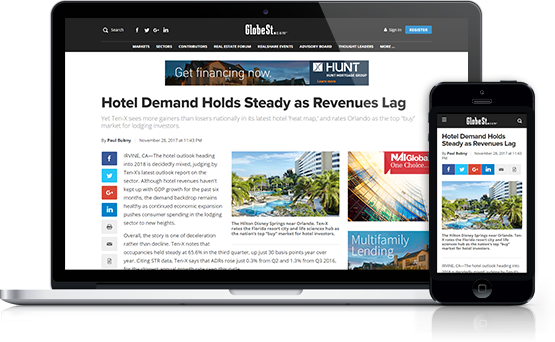
Commercial real estate investors continue to be drawn to the D/FW Metroplex because it has one of the strongest job markets in the nation. As a result, the region's multifamily and retail investment sectors have reaped the benefits with improving fundamentals. In spite of these gains, the recession has taken its toll on the CRE market, as each product type works through various stages of delinquency, particularly the highly exposed office sector. The outlook for the multifamily and retail segments is more promising because employment gains have sparked increased demand for both types of assets. Meanwhile, industrial assets in D/FW have experienced a limited amount of loan defaults, following a similar pattern nationwide, and the sector should stabilize relatively soon due to very little new construction.
The Dallas office sector remains nearly 22% vacant, one of the highest rates in the country, and distress continues to impact the marketplace. By year's end, vacancy is expected to increase 50 basis points to 22.5%, and rent gains will be nominal. Asking rents will rise 1.1% to $19.42 per square foot, while effective rates will pick up 1.3% to $15.14 per square foot by year end. Office performance will vary dramatically by quality and location, with class A assets in Preston Center, Las Colinas, East Dallas/Near North Central Expressway and the Fort Worth CBD expected to outperform this year.
At the same time, many class C buildings will continue to struggle to attract and retain tenants. Top-tier properties registered a more significant spike in vacancy through the downturn than the class B/C sector; however, class A maintains a tighter rate overall and will continue to lead a recovery as tenants upgrade to higher-quality space at reduced rents. Construction activity remains near historic lows, and while the current overhang of space will hinder substantial growth in occupancy and rents this year, the pace should increase in 2012. These challenging fundamentals have not only led to a large pool of distressed assets, but have also shaped the approach many lenders and servicers are taking to these properties. With a low estimation of recovery value on distressed office assets, lenders have pursued restructuring and modifications as opposed to foreclosure and REO. This is especially apparent among CMBS loans where 10% of outstanding office paper by dollar volume is listed as distressed, but by less than 30 days.
Recommended For You
Want to continue reading?
Become a Free ALM Digital Reader.
Once you are an ALM Digital Member, you’ll receive:
- Breaking commercial real estate news and analysis, on-site and via our newsletters and custom alerts
- Educational webcasts, white papers, and ebooks from industry thought leaders
- Critical coverage of the property casualty insurance and financial advisory markets on our other ALM sites, PropertyCasualty360 and ThinkAdvisor
Already have an account? Sign In Now
*May exclude premium content© 2025 ALM Global, LLC, All Rights Reserved. Request academic re-use from www.copyright.com. All other uses, submit a request to [email protected]. For more information visit Asset & Logo Licensing.








